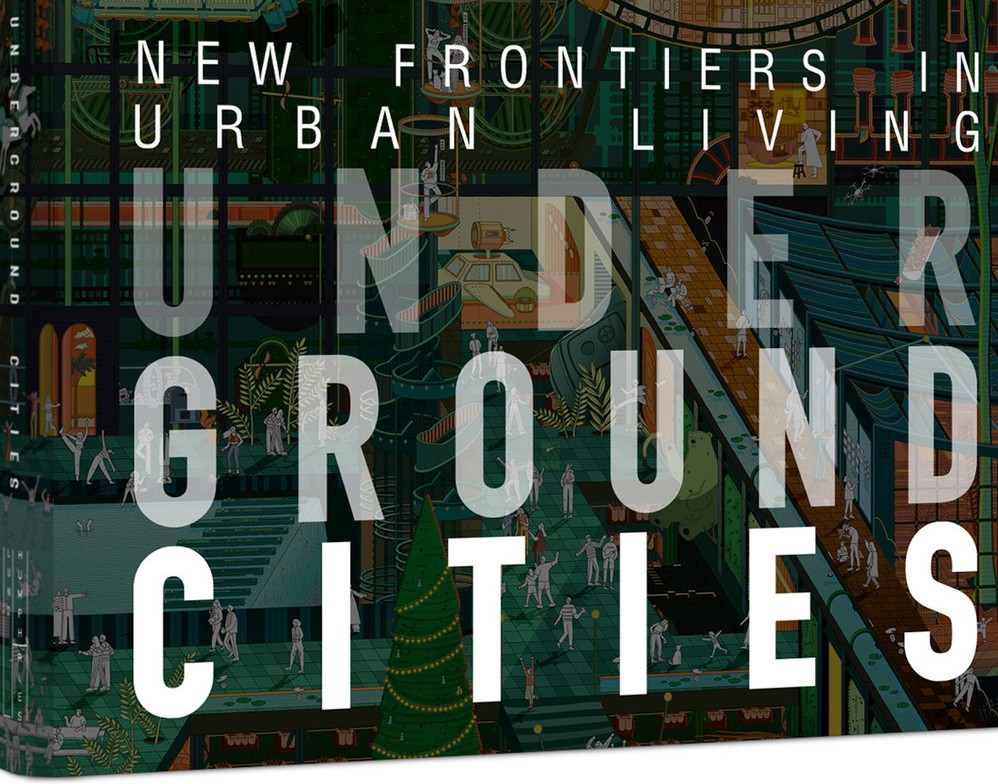Post
BOOK REVIEW : Underground Cities - New Frontiers in Urban Living
21 Dec 2020
UNDERGROUND CITIES
NEW FRONTIERS IN URBAN LIVING
Edited by Pamela Johnston, John Endicott and Nancy F Lin
Published by Lund Humphries
Reviewed by Rob Fiehn
In Isaac Asimov’s 1954 science fiction classic The Caves of Steel, the author imagines a distant future where the global population has reached 8 billion (we’re almost there now) and humanity has retreated under the surface of the planet to exist in vast subterranean metropolises. The characters in the story are torn between the Medievalists, who long for a return to a traditional life above ground, and the Spacers that promise a more exciting life off-world. Either way, the existence in the sunken precincts is clearly not tenable in the long term – something has to change for people to move forward.
I mention this novel when reviewing Underground Cities: New Frontiers in Urban Living because the roots of subsurface colonisation are born out of those same utopian visions that were prevalent in the 1950s and 60s, formed from a belief that technological advancement was the solution to the ills of the world. Asimov’s world is a marvel but also feels unbearably claustrophobic, even if that was not the author’s intention (he was a self-confessed claustrophile). The contributors of this new book from AECOM would like to challenge these preconceptions and reveal the opportunities provided by excavation as climate change and mass urbanization make us reappraise how and where we live.
An accessible and fascinating introductory essay by Pamela Johnson lays the groundwork for the book, where she reveals the stories behind the Minnesota Experimental City and Ecopolis. It seems incredible now that such sunken cities were ever given credence but it was a different age, with more optimism and a dash of naivety. Although the proponents of these radical forms of underground urbanism were idealists, they seemed lost in their visions and failed to make the case for their projects, instead of simply improving life on the surface. Ecopolis founder Guy Rottier argues that “we have to invent the future, not just submit to it,” whereas I think it is now more accepted that the best architectural and engineering designs respond to problems rather than supercede them.
This unfortunate starting point does slightly undermine the rest of the case studies, which make up the bulk of the publication, as the wide-eyed enthusiasm has been replaced with the pragmatism that is normally associated with below-grade projects – something the authors were setting out to subvert. This is reinforced later in the book with examples such as the tunnels built by Viet Cong soldiers in the 1960s. We might be impressed with the manner in which these routes were constructed but as a product of war they were only created out of extreme necessity. When the writer goes on to explain that circadian lighting could make underground inhabitations more bearable, I’m still suffocating in the oppressive subterranean network in Vietnam, wishing for daylight and air.
Underground Cities is a fascinating read and clearly the product of years of painstaking research for projects across the globe. It reveals the possibilities opened up by digging down, unlocking places that are suffering from the harshest conditions, which will become ever more relevant during the climate emergency. However, this reader remains convinced that living and working above ground is still infinitely more preferable and we should be focused on improving these conditions before we retire to the caves of steel.
